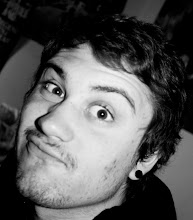In the wake of the online community and the creation of the “avatar”, a new type of identity emerges the online identity. Lev Manovich’s essay, The Paradoxes of Digital Photography, he bases it around the creation of digital media and how Digital photography is photography after photography. Well one could argue that growing popularity of the online identity and the avatar has created identity after identity. People are able to create near perfect representations of themselves online, exaggerated ones, and completely different ones. As contemporary artists, this newly formed identity poses a lot of questions for us. How do we want to view the online identity? An identity separate from ourselves, or a part of ourselves? It is my belief that the online identity is something we should use for our own practice, as a way to mock and challenge the idea of the online identity with one.
Like digital photography compared to traditional photography, the online identity works differently than a person’s real identity. The online identity is completely constructed by the original identity. That person has the complete power to show whatever they want about themselves (or lack of) to the person viewing the profile. A person’s “about them” section could be completely fictional. That person is not outgoing and fun to be around, they are complete assholes. My work addresses that. This figure “clarkexcore” is not I, but a projection of what I want to be. I could never grow a beard that big, it’s just a costume. He acts a certain way too. He’s badass and like by every one. I know that’s not true about me. It mocks every profile ever created on a website. That first time reader has no way of knowing if what they are saying is true or not.
The profile picture, or avatar, plays a big role in the representation of that person. Profile pictures are certainly untruthful. I’m not going to let a person see my visual flaws as a first impression online, that’s just absurd! So people pick pictures that are flattering or they simply just use a picture that isn’t them. The online identity is given a face and a very constructed one. Terms for those types of flattering pictures even have names, like the MySpace angle. Facebook even gives users the option to “un-tag” yourself in pictures. It is useful if you have family and you do not want them to see you spending all that hard-earned OSAP on partying but it also lets people un-tag un-flattering pictures of themselves. My work fits this formula because it is completely constructed. A person can see just the beard and glasses and know that it’s clarkexcore. A beard and glasses is all it takes for someone to adopt that identity. No one can take my real identity as easily as that.
The online identity has created identity after identity. No longer will just one exist but two, maybe even several of one person. Looking into past trendy websites, a person can see the way they wanted to be portrayed then and how they want to be portrayed now. The idea of an identity has no limitations in the online world. I can create complete fictional characters and have them interact with real people and they not even know it’s a fake. My work challenges those ideas of what an online identity is and it’s actual function online, but I believe that as the progresses we will see more and more artists approaching online identity as an art form in the years to come.






